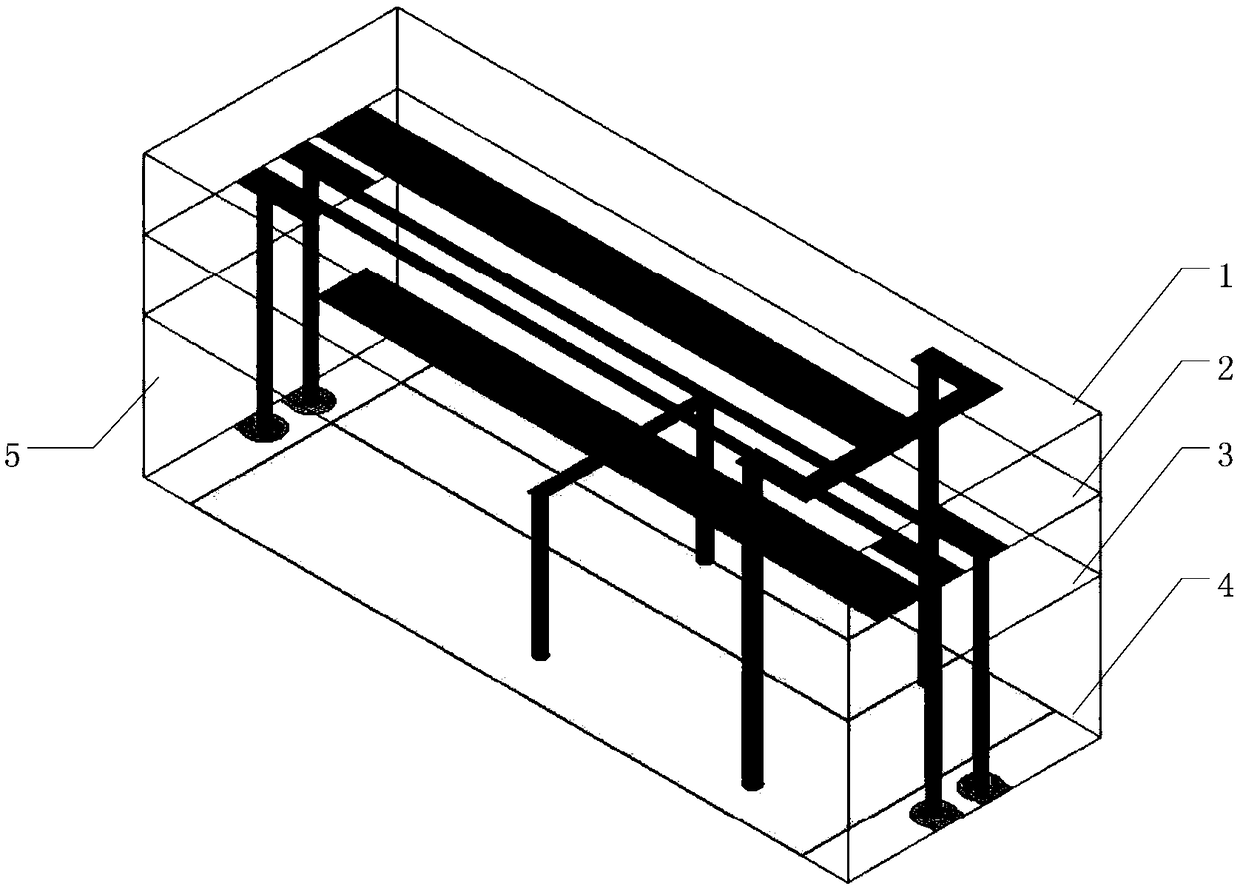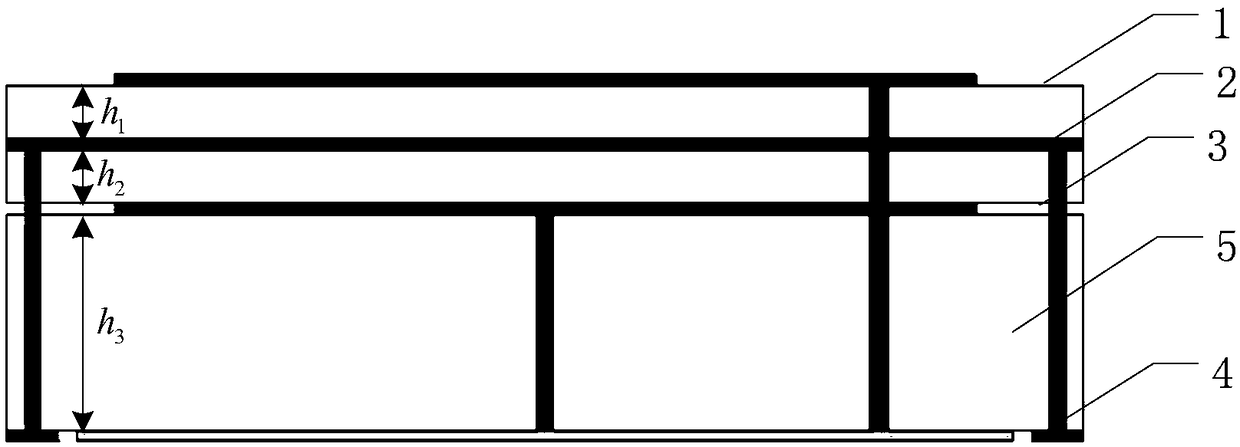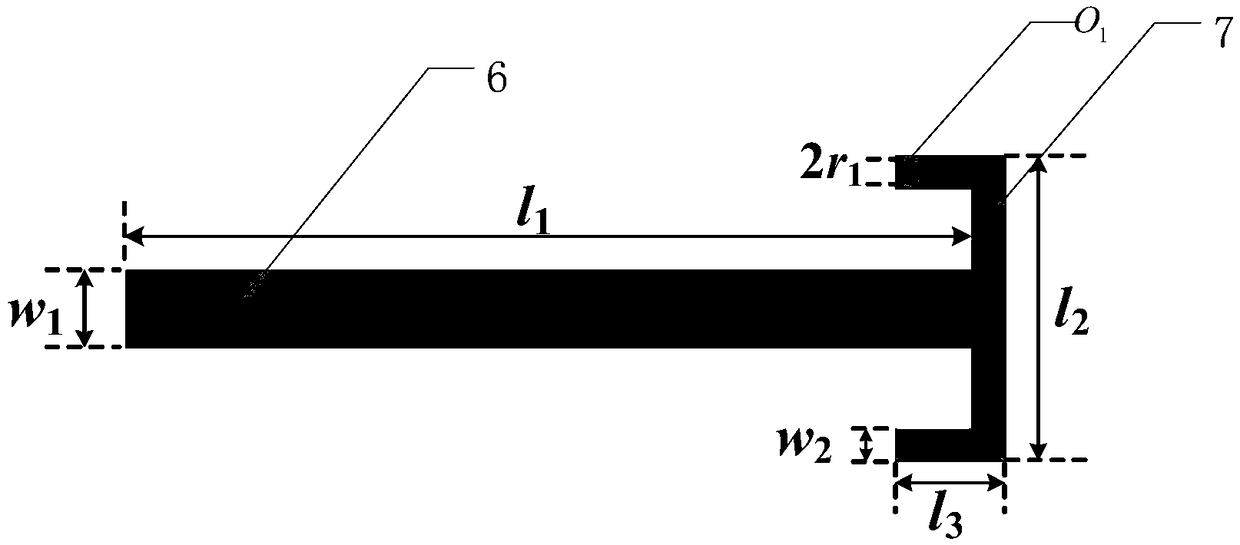Miniature ultra-wideband common mode noise suppression circuit
A common mode noise and suppression circuit technology, applied in circuits, electrical components, waveguide devices, etc., can solve the problems of deteriorating common mode noise suppression effect, inability to adapt, large size, etc., to maintain signal integrity and ensure signal integrity sexual effect
- Summary
- Abstract
- Description
- Claims
- Application Information
AI Technical Summary
Problems solved by technology
Method used
Image
Examples
Embodiment Construction
[0019] The present invention will be further explained below in conjunction with the accompanying drawings and specific embodiments.
[0020] The common mode noise suppression circuit provided in this embodiment adopts multi-layer circuit technology, such as figure 1 and figure 2 Shown are the three-dimensional structural schematic diagram and side view of the common mode noise suppression circuit, respectively. The common mode noise suppression circuit has a four-layer circuit structure, all of which are made of metal, and copper / silver with less loss can be used to realize the actual circuit. The four-layer circuit includes a quarter-wavelength stepped impedance resonator layer 1, an embedded differentially coupled microstrip line layer 2, a half-wavelength resonator layer 3, and a reference ground layer 4; each layer is separated by a dielectric substrate 5; in this embodiment The LTCC process is adopted in the medium, the dielectric material is Dupont 951, and the relat...
PUM
 Login to View More
Login to View More Abstract
Description
Claims
Application Information
 Login to View More
Login to View More - R&D Engineer
- R&D Manager
- IP Professional
- Industry Leading Data Capabilities
- Powerful AI technology
- Patent DNA Extraction
Browse by: Latest US Patents, China's latest patents, Technical Efficacy Thesaurus, Application Domain, Technology Topic, Popular Technical Reports.
© 2024 PatSnap. All rights reserved.Legal|Privacy policy|Modern Slavery Act Transparency Statement|Sitemap|About US| Contact US: help@patsnap.com










